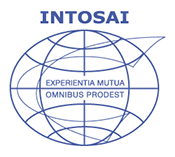Integrating sustainable development in the Office of the Auditor General of Canada’sOAG’s work
The OAG’s Sustainable Development Strategy outlines how the Office integrates sustainable development considerations into how it plans and conducts its audits.
The Office’s sustainable development strategy
Our current Sustainable Development Strategy focuses on integrating sustainable development considerations into our core business of planning and conducting audits, as well as our day-to-day operations.
Aligning our 2030 Agenda work with international approaches
The OAG aligns its work with the 2030 Agenda by supporting four approaches established by the International Organization of Supreme Audit Institutions (INTOSAI).
INTOSAI operates as an umbrella organization for Supreme Audit Institutions (SAIs) around the world, including the OAG in Canada. It established four approaches for carrying out sustainable development goalsSDG audits and reviews:
- Assess the preparedness of national governments to make progress of the SDGs, and subsequently audit their operation and the reliability of the data they produce.
- Undertake performance audits of government programs that contribute to the SDGs.
- Assess and support the implementation of Goal 16, which relates in part to effective, accountable and transparent institutions.
- Model transparency and accountability in their own organization.
The OAG supports INTOSAI’s four approaches in its current work. The OAG also leads INTOSAI’s global efforts for assessing the preparedness of national governments and is part of the INTOSAI Working Group on Environmental Auditing.

Helping auditors consider sustainable development
Auditors are required to identify the relevant SDGs and associated targets that they plan to consider during their audits. They are also required to consult an internal specialist responsible for environment and sustainable development to guide their work.
They are encouraged to use the Office’s Environment and Sustainable Development Guide to help them identify and assess environmental and sustainable development risks that could be associated with the programs and activities they audit.
The following are examples of questions that auditors could ask to assess these risks:
- Is the entity aware of the united nationsUN Agenda 2030 and its 17 SDGs?
- Is the entity responsible for delivering on any goal, target, and indicator in relation to the subject matter being audited?
- Has the entity done any work on aligning its relevant program or activity with any SDG, target, and indicator?
- Does the entity collect data on a relevant indicator?
Modelling transparency and accountability
The Office supports INTOSAI approach 4—being models of transparency and accountability in their own operations, including auditing and reporting—through a number of activities such as:
- receiving advice from independent advisors through several committees with external members,
- practice reviews to provide assurance to the Auditor General that audits have complied with Office policies and professional standards and were supported by appropriate evidence,
- internal audits that focus on the internal management and administration of the Office,
- quality assurance reviews from external organizations, such as international peer reviews, and
- proactive disclosure of the details of its operations.